A comprehensive in silico investigation into the nsSNPs of Drd2 gene predicts significant functional consequences in dopamine signaling and pharmacotherapy
- PMID: 34853389
- PMCID: PMC8636637
- DOI: 10.1038/s41598-021-02715-z
A comprehensive in silico investigation into the nsSNPs of Drd2 gene predicts significant functional consequences in dopamine signaling and pharmacotherapy
Abstract
DRD2 is a neuronal cell surface protein involved in brain development and function. Variations in the Drd2 gene have clinical significance since DRD2 is a pharmacotherapeutic target for treating psychiatric disorders like ADHD and schizophrenia. Despite numerous studies on the disease association of single nucleotide polymorphisms (SNPs) in the intronic regions, investigation into the coding regions is surprisingly limited. In this study, we aimed at identifying potential functionally and pharmaco-therapeutically deleterious non-synonymous SNPs of Drd2. A wide array of bioinformatics tools was used to evaluate the impact of nsSNPs on protein structure and functionality. Out of 260 nsSNPs retrieved from the dbSNP database, initially 9 were predicted as deleterious by 15 tools. Upon further assessment of their domain association, conservation profile, homology models and inter-atomic interaction, the mutant F389V was considered as the most impactful. In-depth analysis of F389V through Molecular Docking and Dynamics Simulation revealed a decline in affinity for its native agonist dopamine and an increase in affinity for the antipsychotic drug risperidone. Remarkable alterations in binding interactions and stability of the protein-ligand complex in simulated physiological conditions were also noted. These findings will improve our understanding of the consequence of nsSNPs in disease-susceptibility and therapeutic efficacy.
© 2021. The Author(s).
Conflict of interest statement
The authors declare no competing interests.
Figures
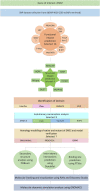

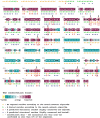

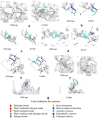
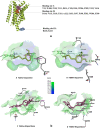
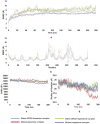
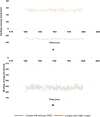
References
-
- Hacia JG, et al. Determination of ancestral alleles for human single-nucleotide polymorphisms using high-density oligonucleotide arrays. Nat. Genet. 1999;22:164–167. - PubMed
-
- Cargill M, et al. Characterization of single-nucleotide polymorphisms in coding regions of human genes. Nat. Genet. 1999;22:231–238. - PubMed
-
- Lee JE, Choi JH, Lee JH, Lee MG. Gene SNPs and mutations in clinical genetic testing: Haplotype-based testing and analysis. Mutat. Res. 2005;573:195–204. - PubMed
-
- Collins FS, Brooks LD, Chakravarti A. A DNA polymorphism discovery resource for research on human genetic variation. Genome Res. 1998;8:1229–1231. - PubMed
-
- Alexander RP, Fang G, Rozowsky J, Snyder M, Gerstein MB. Annotating non-coding regions of the genome. Nat. Rev. Genet. 2010;11:559–571. - PubMed
MeSH terms
Substances
LinkOut - more resources
Full Text Sources

